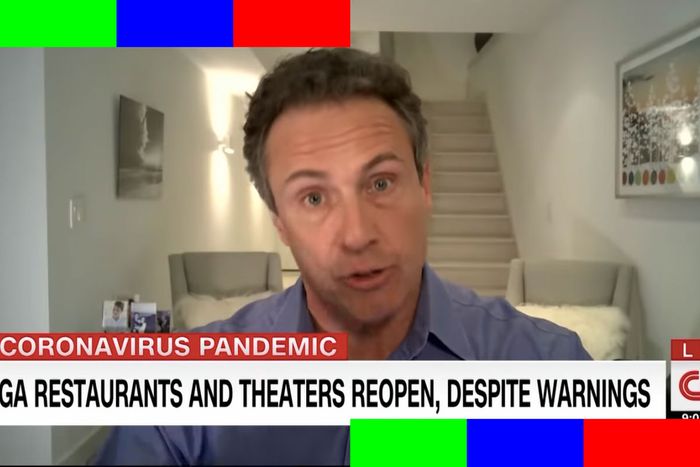
Sunday night, CBS is doing something pretty cool: It’s resurrecting its long-dormant Sunday Night Movie franchise, hoping that with families trapped together at home, they might be looking for something fun to watch together. Beyond being blockbusters safe for most ages, the films in the five-week stunt all come from the vault of Paramount Pictures, which became a corporate sibling following last December’s reunification of CBS and Viacom. It’s a good example of how synergy can work well at big companies, and something the larger ViacomCBS will need to replicate thousands of times in the next few years as it figures out a way forward in the streaming age. This week’s newsletter takes a closer look at where the company’s digital strategy stands ahead of its earnings call next week. We’ve also got some new information about how much (and what) we’re watching during the pandemic. And as always, thanks for reading.
ViacomCBS Needs a Better Streaming Strategy
Back in February, ViacomCBS execs last briefed investors on the company’s battle plan for the streaming age, and it … did not go well.
During that earnings call, CEO Bob Bakish talked at length about how he wanted to use CBS All Access as the core of a reimagined platform that would put some (but not all) programming from ViacomCBS’s various networks in one place. Sounds reasonable, except Bakish also insisted the company would continue selling its most valuable assets to other platforms (if the price was right) and had no plans to increase the programming budget for its new service (as every other new streamer has done). Investors and industry observers were left baffled by this unfortunately named “house of brands” approach; ViacomCBS stock lost almost 20 percent of its value overnight. As media analyst Rich Greenfield of LightShed put it at the time, “Honestly, it’s a mess.”
ViacomCBS gets a chance to reset the narrative surrounding its streaming strategy a week from today, when it reports second-quarter earnings. It’s unclear whether the company will actually say much about its plans, if only because there are more immediately pressing concerns — namely the coronavirus pandemic and its impact on advertising revenue and future production. But of course, both of those things are intimately tied to how ViacomCBS proceeds in the direct-to-consumer (DTC) streaming space. “I think the big question for Wall Street is going to be how does the difficult advertising environment impact their investment strategy in DTC,” Greenfield told me Wednesday. “Given the weak economy and everything else, how should everyone be thinking about their readiness to invest in DTC, or is this going to be something they’re going to pull back on given the environment we’re in?”
Retrenchment is certainly an option, and Greenfield is probably right to note that ViacomCBS’s biggest priority right now is making sure it has enough money to hold on to CBS’s NFL package when rights to the games come up for negotiation over the next few months. But pulling back on a streaming reboot would be a terrible mistake (one I don’t think it will make, by the way).
Instead, ViacomCBS needs to expand upon the vague details of the plan it hinted at in February and make it clear it believes streaming is key to its future and not some side hustle it’s working on just because all the other conglomerates are doing it. A few ideas for what such an effort might entail:
• Have one streaming service, not three… Back in February, the company said a new turbocharged CBS All Access would be the centerpiece of its new streaming empire, complementing its stand-alone Showtime premium service and the free, ad-supported Pluto. But I don’t think it makes sense, long-term, to spread ViacomCBS’s assets across a trio of streaming platforms. It confuses consumers and diffuses the company’s marketing messages.
Showtime, as a direct-to-consumer offering, should simply be part of a premium tier of the new ViacomCBS offering, with its programming sitting right next to CBS All Access originals and the free content on Pluto. If you’re going to have a “house of brands” service, then have one amazing mansion and not three midsize homes in different neighborhoods. (By the way, this is pretty much what WarnerMedia and NBCUniversal are doing with HBO Max and Peacock, respectively. Yes, HBO Now isn’t going away yet, but given HBO Max costs the same and offers the exact same content as Now, the latter service will almost surely fade away within a few years.)
• ….and make a supersized Pluto that platform, not CBS All Access. Despite some very good originals (The Good Fight and Star Trek: Picard would be Emmy favorites in a more just world), anyone who’s spent time actually using AA knows it’s hardly state-of-the-art from a technology and user interface point of view. By contrast, Pluto — particularly after a recent revamp — is a breeze to use. Its interface emulates the experience of scrolling through a cable program guide, with hundreds of live channels serving as an entry point for Pluto’s on-demand content. If the goal is to move existing cable and broadcast audiences into the streaming space, a platform which feels like old-school TV seems better suited to the task than one which feels like 2010-era Hulu.
• Let anyone stream a basic version of the service for free. The biggest tragedy of CBS All Access is that under the leadership of former boss Leslie Moonves, CBS expected consumers to pay $6 per month for a service with a ton of ads, a limited library, and very little exclusive content. This, and not the quality of programming or the overall offering, largely explains why the service still has fewer than 10 million subscribers (and likely only around 5 million; CBS doesn’t break out AA’s numbers) while the ad-free Disney+, which costs $1 more, had nearly 30 million U.S. customers within a few months.
NBCUniversal also gets this, which is why the most basic version of Peacock will be free to all when it rolls out in July. An entry-level Pluto couldn’t offer next-day runs of CBS shows or NFL games, but it would at least get consumers invested in the company’s brand. And like Peacock, Pluto could give current cable customers (and anyone willing to spend $5 or so per month) a premium experience featuring those CBS shows, plus in-season episodes of series from ViacomCBS cable networks and a selection of content from Showtime’s library.
I don’t think anything I pitched above is all that radical or even that far removed from where ViacomCBS execs seem to be heading based upon their February comments. The problem with the last earnings call was that company execs made it seem like they were stalling for time, that they were only making an announcement because rivals such as NBCUniversal and WarnerMedia were so far ahead of them in terms of their streaming evolution. Given all the uncertainty surrounding the pandemic, perhaps next week’s earnings call won’t be the right place to offer more insight into where ViacomCBS streaming is headed.
But while news of another deep round of layoffs within the company perversely sent its stock higher earlier this week — Wall Street really loves to see employees lose their jobs, doesn’t it? — ViacomCBS needs to lay out a much clearer vision of its streaming strategy sooner rather than later.
Lockdown Ratings: Winners and Losers
The early line on TV viewing during the Great Shutdown was, “Viewing is up! Everyone’s watching and streaming more!” The reality? Not every platform is living its best pandemic life.
Streamers, at least as a group, continue to thrive. Per the most recent Nielsen data, Americans are streaming roughly twice as much video content as they were a year ago. But collectively, traditional linear viewing of broadcast and cable hasn’t soared since lockdowns started rolling out in mid-March. In fact, the Nielsen estimates total use of TV for linear viewing is actually down just a bit: 24 percent of viewers watched traditional TV the week of March 16, compared to 23.4 percent the week of April 13. Though broadcasters are seeing huge gains for their nightly newscasts, and all the cable news channels are doing well, there’s been very little evidence of substantial viewing surges for most network entertainment programming. A few shows have done a bit better than usual, but nothing to indicate Americans are watching dramatically more network and cable TV.
A MoffettNathanson analysis of Nielsen data suggests one reason the overall usage numbers for linear TV aren’t up is because of big fluctuations between networks — i.e., there are some clear winners and losers. The Wall Street analysts this week put out a report looking at audience trends among adults under 50 (the key ad-sales demographic), and there a few surprises in addition to the expected trends:
• On the obvious side of the ledger ESPN, NBCSN, the Golf Channel, and Fox Sports all took a tumble versus year-ago ratings. With no new sporting events to speak of, ESPN’s audience dropped a massive 60 percent during the first half of April, while the Golf Channel lost 70 percent of its younger audience. (Note: MoffettNathanson used so-called C3 ratings, which is what advertisers use to guide their spending.)
• Cable news was also way up (also file under “duh”), but the gains weren’t equal. CNN has made the biggest gains, with its total day viewership in the adults under 50 demo soaring a stunning 200 percent during the first two weeks of the month. Fox News jumped 110 percent, while MSNBC rose 41 percent. One reason CNN jumped so much is because its year-ago numbers were notably behind its two rivals, so it had much more upside. Even so, CNN’s surge is real: Nielsen data for the full month showed the network delivered its best demo numbers since Hurricane Katrina’s aftermath in September 2005.
• On the broadcast side, Fox and ABC are the only two networks that have gotten a bump during the lockdowns. Per MoffettNathanson, Fox’s early April C3 demo numbers jumped 27 percent, boosted by unscripted hits The Masked Singer and Lego Masters, as well. ABC was also up 10 percent versus year-ago ratings, in part because of boffo numbers for its Disney Family Sing-Along special.
• Cablers doing well during the crisis include several networks which feature escapist or feel-good fare, including Hallmark Movies & Mystery Channel (+41%), Lifetime (+39%), Food Network (+22%), and Comedy Central (+17%). And interestingly, Discovery’s DIY Network — which is slated to go away in the fall for a new channel from Fixer Upper’s Chip and Joanna Gains — saw its demo audience explode in April. MoffettNathanson says DIY’s numbers jumped 63 percent over a similar frame in 2019, and nearly doubled from March to April of this year. Maybe folks were looking for ideas on how to spend their time indoors?
Parting Shot
“Therefore, effectively immediately AMC will no longer play any Universal movies in any of our theaters in the United States, Europe, or the Middle East.”
— AMC Theatres chairman and CEO Adam Aron, in a letter to Universal Pictures denouncing a comment from NBCUniversal chief Jeff Shell suggesting the studio would release movies via streaming at the same time they play in theaters. Universal says AMC overreacted.


